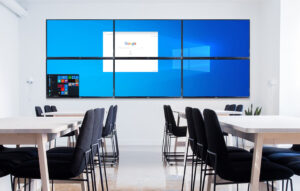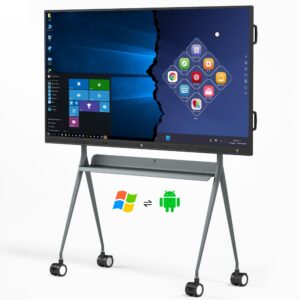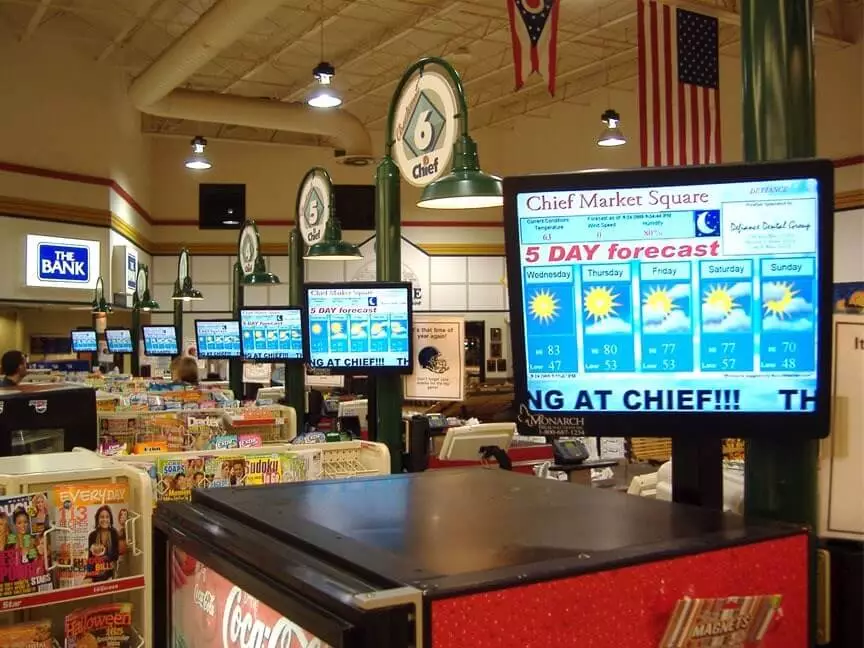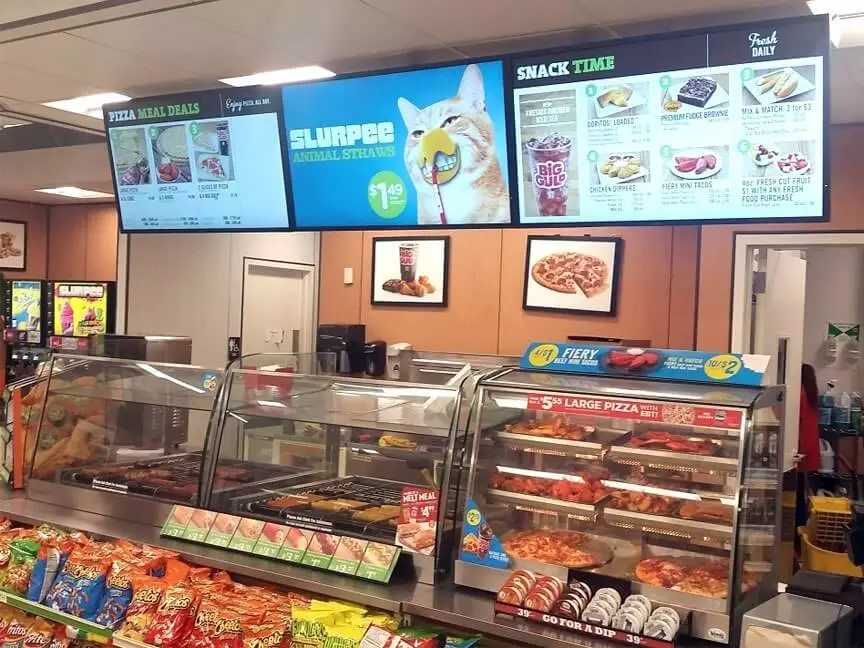Digital Signage | Your Ultimate Guide
Now Days Digital kiosks are a fantastic piece of technology that comes with a host of features to help revolutionize your business And Office. wayfinding Kiosk to advertising Signage Display, these digital kiosks do it all Signage Place! Our This guide contains all you need to know about how you can use This Signage Display kiosk, how to set it up, and a number of the many benefits they can bring to your business.

What Is a Digital Signage?
So, what is a Digital Signage? In a sentence, a digital booth (also known as a digital totem) is a freestanding digital Signage display. It They can include immersive touch screen abilities or be used purely aesthetically all the time. Digital Signage kiosks come with all the fantastic benefits of our signage software with the additional benefit of immersive New touch technology with More Facility. This Product improves the engagement your business has between you and your customers Impressions.
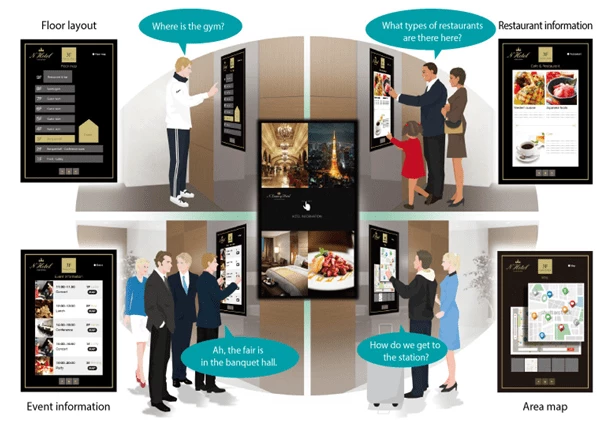
How Digital Signage Work?
digital signage media players, our digital kiosks are ‘plug and play.’ all you have to do is connect your digital kiosk to a power supply and watch as your content loads within a minute. You need is a plug socket and an internet connection (ethernet Connections or WIFI) Connections to bring your content to life. If you need to change the content on your kiosk, simply log in to your Software account via our website and make the changes you need. If need support, each one of our digital kiosks comes installed with Team Viewer/Any Desk (remote support) Software. This means wherever you are, and wherever we are, we will be able to provide you with the help you need. Our digital kiosks are powered by influential android media players (mini PC) that hide out of sight. Our kiosks are available in sizes from 43″ to 55″ inches, meaning you can rest easy knowing your content will be displayed clearly and attractively.

What Are Digital Signage Used For?
The power and awesomeness of a digital kiosk are reflected in its many uses and coverage of diverse industries they are employed in. Arguably wayfinding is one of the most popular services of interactive digital kiosks. By installing a wayfinding kiosk in a lobby or hallway, you can drastically increase customer and visitor satisfaction From Every Site. it also helps in cutting down the number of people who get lost on the way to meetings.
Another everyday use of digital kiosks is advertising Sector. our clients install a digital kiosk in an area that experiences a high footfall (foot traffics) There will display adverts on the Display. our clients Gets an extra revenue stream that they can invest back into their business with No Loss. Big Screen outdoor Digital kiosks are great to increase brand awareness and ensure your brand is top of mind among potential customers Every Sector.
Other uses for digital kiosks: Welcome content, social media, information hubs, etc. To Know how a digital kiosk could be used at your business, contact with GCTLLED team today or Next.

How Much Does Digital Signage Cost?
People think a digital kiosk costs an arm and a leg purely because it’s digital and is often only seen used by larger brands with deep pocket. Now, this couldn’t be further from the Real truths. As of late, the price of digital signage and digital kiosks has descended rapidly. It’s has never been a better time than now to invest in digital kiosks Sector.
Its software is cheap too! With prices starting at 90,000.00 per kiosk, it allows your business to forge a great looking digital signage project for less. Each screen will also require an android media player. These come at a one-off cost of just 1,50,000.00 upfront and stay hidden out of sight.
For up to date hardware pricing for digital kiosks, contact the GCTL team today.
How Do Control Digital Signage?
Our digital kiosks are Controlled by our cloud-based digital signage software Panel. Our newly updated cloud-based Software, drag and drop Facility allows you to control your network of screens or kiosks (or both!) from Everywhere in the world From Single Place.
If you want to update the content on your digital kiosk, simply log in to our Software and start creating with Easy Methods. Or alternatively, you can upload pre-made content. You will then compile this content into a playlist that can then be assigned to a screen. Within seconds you will see your shiny new content appear on your digital kiosk for all to see.
Now Days digital kiosks are a great addition to any business Office and, in most cases, will serve as an extra employee, reducing your workload! If you’re looking for a digital kiosk for advertising Signage, wayfinding Kiosk, or another project you have in mind, contact With GCTL LED team today. GCTL Sales, Imports, Distribute All Types Digital Signage Display Kiosk.

Industry and Use:
Digital kiosks and digital signage have introduced a new way to provide audiences with exciting information. From retail to healthcare Sectors, numerous industries are starting to leverage the many pros of self-service Kiosk solution. The benefits of these Signage solutions are not limited to one specific vertical Screens but can be leveraged by businesses, Offices, and organizations in nearly any industry. Owner Travel and tourism organizations are beginning to use live, interactive information to encourage travelers to explore their destination. Retail kiosks are changing how customers engage with Their brands, and government departments are leveraging the advances in technology to make services more comfortable, convenient, accurate, and efficient. “The possibilities for these solutions are endless,” said Gilder. “We’re continuously impressed by the innovation of our clients and the industries they serve.”
Organization Signage:
Self-service Kiosk solutions help organize by Monitoring tasks more efficiently and accurately. Interactive kiosks streamline processes, increase productivity, and extend hours of operation.
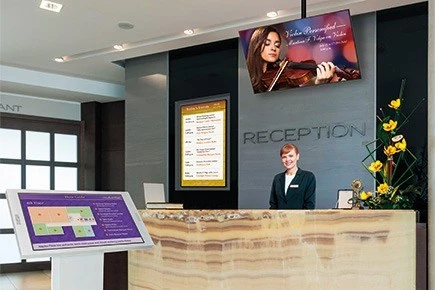
Promotional Signage:
Interactive kiosks and digital signage units enhance customer loyalty with targeted promotions. The self-service solution engages frequent customers by offering customers coupons and other rewards, creating brand loyalty, and increasing revenue.
Kiosk Accessibility | Digital Accessibility Signage:
Manufacturers can design and build self-service solutions to be ADA compliant. Multi-language support helps businesses and organizations interact accurately with individuals from many different regions of the world.
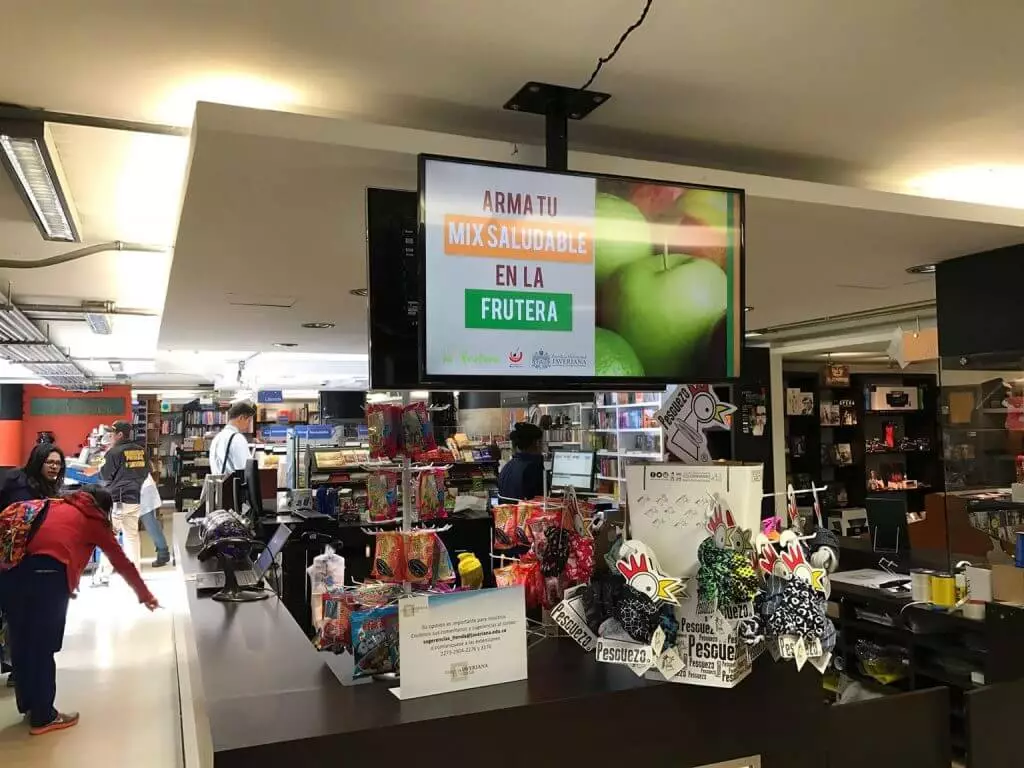
Security Digital Signage:
Interactive kiosks provide system performance management, system security, and a wide range of component support to protect user information. The security features control how the kiosk is authorizing, collecting, and storing personally identifiable data.
Survey Sector Kiosk:
Self-service solutions help Any businesses and organizations to learn more about their customer’s needs. In-store surveys collect consumer insights while they are still at the location. Companies can use the information to create more targeted content for consumers, improving the experience, and increasing revenue.
Analytics Sector Kiosk:
Finally, a great remote monitoring solution should offer measurable ROI with the ability to pull logs, diagnostics, and usage information reports from the kiosk and digital signage. A comprehensive remote monitoring solution should provide the deplorer with reports including information about the number of users who interact with the system and the duration, where and what the user interacted with, viewed, touched, etc. While this information is valuable for IT purposes, it can also be leveraged for marketing research. It can even give deplorers insight into changes that may need to be made in the user interface.
Wayfinding Digital Signage Kiosk:
Interactive kiosks and digital signage can be leveraged as a wayfinding solution to guide users. Businesses and organizations can use the wayfinding capabilities to improve customer-facing staff’s productivity and enhance customer service.
Advertising Display Kiosk:
Interactive kiosks and digital signage provide convenient and engaging access to consumers. Digital advertising offers the ability to load ad content in multiple formats, such as video, photo, text, and audio.
Order Entry Signage Kiosk:
Businesses can leverage interactive kiosks for self-service order entry. Kiosks allow employees to reallocate the time previously spent on taking orders and provide a more efficient and accurate service while reducing transaction costs.
Payment Kiosk:
Bill payment capabilities allow employees to focus on servicing customers while self-service solutions complete transactions.
Health Sector:
Remote monitoring solutions can give deplorers the ability to monitor the kiosk operating system’s health and software and accompanying hardware in real-time. Deplorer’s can be notified if either the physical unit or the software has been accessed inappropriately, either by email or text message.
Multi-user Access Kiosk:
With remote monitoring, your software platform will be able to support multi-permission level access. Multi-user access can be used for alerts, security updates, and pushing new content to the interactive kiosk or digital signage. In some cases, a generic user might be limited to their account, content, and alerts. The IT team account might have access to manage all accounts and attention, as well as the ability to push security updates and software to the device.
Customizable Alarms Kiosk:
Remote monitoring allows deplorers to customize each alarm’s severity and determine who an alert should go to. For instance, if a low paper roll is 80-percent empty, that alert might go to the local store owner. When the short paper reaches 90-percent empty, that alert could be escalated and sent to the district manager, who can call the store to find out why it’s not being replaced.


